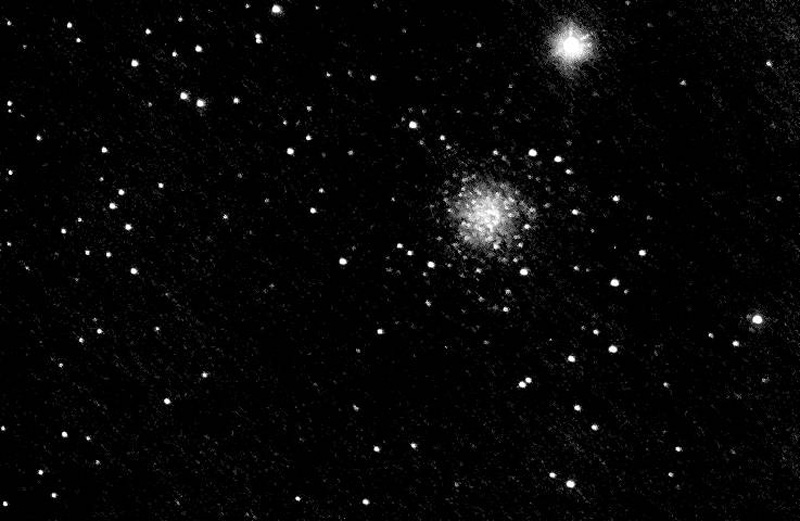
NGC 2419
NGC 2419 is a small, faint (different sources give the magnitude as 9 or 10) globular cluster in the southern portion of Lynx. Spanning only about 4 1/2 minutes of arc, the cluster is quite distant, being almost 300,000 light years from Earth and about the same (or a bit more) from the center of the Milky Way. Although once thought to be not a part of our galaxy, the cluster is now believed to be a satellite of the Milky Way, but it is so far from the core that it will take about 3 billion years for NGC 2419 to make one obit around our galactic home. This object is the most distant member of the Milky Way that can be seen in amateur telescopes. Although intrinsically bright (the cluster seems to be one of the most luminous of the globulars), it is so distant that only the brightest stars, most of which are red giants, can be seen. Some astronomers speculate that it may actually be the core of a small galaxy that has been stripped of its outer regions by a close approach to the Milky Way in the past.
 |
| Image taken January 3, 2013, with the C-14 operating at F:7 and the ST-8 camera binned 2 X 2. Exposure was 5 minutes, using Track and Accumulate. The camera was not cooled since the ambient temperature was 6 degrees F. |